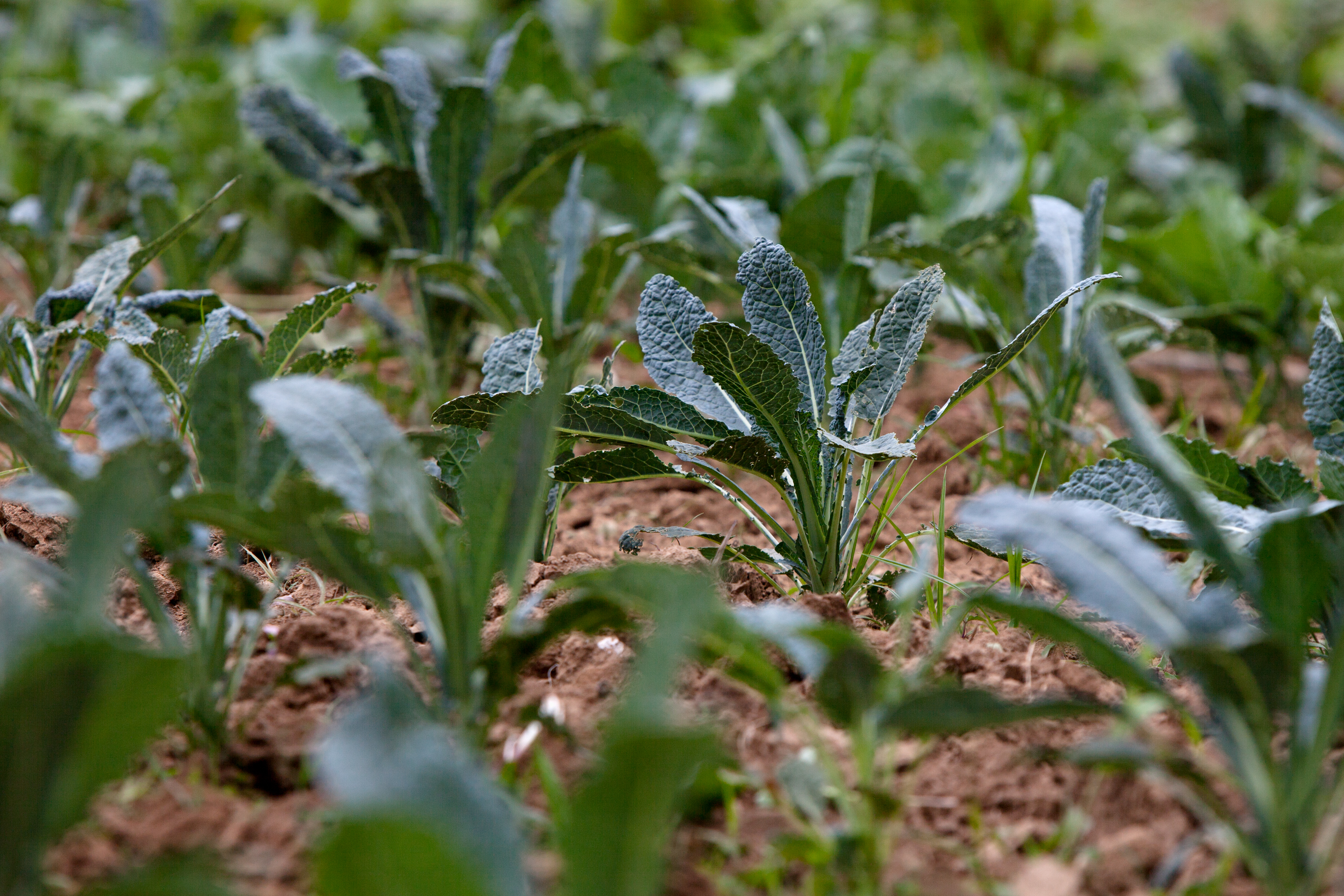
By: Mac Stone, Farmer & Owner, Elmwood Stock Farm
Having only left the farm a handful of times since March, Ann and I have enjoyed nothing but homegrown meals for nine months as of this writing. We did get carry-out from an old favorite restaurant twice, but other than that, it was farm-cooked.
Fortunately, we have lots of food to choose from here. Sometimes we plan the week’s meals in advance; others we decide as we close up the packing shed for the evening. We almost exclusively consume seconds—produce with some blemish that doesn’t meet our sales standards—so the seconds that are available effectively decide for us our evening meal. It feels like date night when one of us grabs a primo product that could have been sold.
The dead of winter, in food-farmer speak, is the Persephone months, aptly named by Eliot Coleman in his must-have book The Winter Harvest Handbook. (If you have a small place in your yard that gets sun in winter, get this book from a local bookseller and grow your own greens.) The name relates to the Greek goddess Persephone, daughter of Demeter, the goddess of agriculture. Apparently, Hades abducted Persephone into the underworld to be his wife, and Demeter threatened to shut down growth on the earth. Zeus—Persephone’s father, god of the sky—brokered a deal where Hades only spends a short time with Persephone each winter, so Demeter shuts us down just for a little while.

Coleman’s Persephone months are the period when we receive fewer than 10 hours of daylight per day, the implication being plants do not grow with so little solar energy coming in. Now, I’m not all up on Greek mythology, but this term is very much in the lexicon of food farmers in this country.
These Persephone months play out in what we like to eat this time of year: the tastiest, most nutritious greens on the planet. In the autumn months leading us into the Persephone zone, leafy green leaves were still actively photosynthesizing solar energy into sugars and flavonoids and enzymes (and stuff) but not actively growing by adding structural cell walls. This means the cells that already existed are tender and chock-full of flavor. The Holy Grail of Kale. The plant concentrates its sugars as a cold-tolerance protection mechanism—antifreeze, as it were.
I just stem it and steam it, simple as that. It takes minutes to prepare kale. When you massage the red, black or green kale leaves grown in the Persephone months, you can smell the flavor and see the juiciness in the leaves.
Spinach salads reign supreme in the dead of winter, since the lettuces don’t tolerate temps in the low teens. We do try hard to keep lettuce going all year with frost blankets inside the protective high tunnels, and as of this writing, we think we have some lettuce heads that are going to make it. Spinach is hardier, though.

Our other veggie go-tos are the single-serving-sized sweet potatoes as well as the fingerling sweet potatoes. A little olive oil coating to catch a rub of salt and garlic powder and a few minutes on the grill alongside a burger—it can’t be beat.
That brings me to winter proteins. Our old farmhouse kitchen is on the east side of the house, affording us a mostly wind-protected deck just outside it. Usually, out here on the banks of the Elkhorn Creek, winds come out of the southwest. (You will notice that three-sided equipment sheds and horse run-in sheds open to the east.) With the house blocking the winds on the deck, we grill year-round.
I can turn a frozen pound of USDA Choice, dry-aged, certified organic, grass-fed, Angus-Wagyu beef into a juicy burger in a little bit of no time. Thawing meats in cold water is a safe and US Department of Agriculture-recommended method to quick-thaw meats. For burgers, the meat thaws while I feed the dogs, get settled in and start the grill. Then it cooks while I prep veggies. We have a rotation of burgers and chicken, and I enjoy eating leftovers from one or the other for several days in a row.
When we’re not up for grilling, we’ll put a nice chuck roast in the slow cooker with some root veggies, and we are set on dinners for the week. Chili easily becomes taco salad fixins and even huevos rancheros.

Look for meats that have been raised consistent with other value propositions in your life. As a reader of the Good Foods Blog, animal welfare is probably important to you. The release of highly toxic synthetic chemicals on the land to grow genetically-engineered seeds probably seems repugnant to you. Forcing all manner of growth promotants and antibiotics into and onto livestock probably seems wholly unnecessary to you. I agree with you. We raise all our animals organically and on pasture for a reason, knowing what we know.
We don’t milk cows at our farm, so I rely on the Co-op for our organic dairy needs, as well as Marco’s coffee, condiments and those dang Justin’s dark chocolate peanut butter cups.
We have only had two meals away from home since March, living off the land, as it were, for nearly a year. Support your local farms and you can live off the land where you live. The Co-op provides you access to local and seasonal foods, responsibly-raised meats and all the other stuff we all like to eat. What you eat matters to you, the community and the planet.
This winter, find your go-to dinners, keep it simple, let the food speak for itself and make plenty for leftovers.
—Mac Stone, Elmwood Stock Farm
